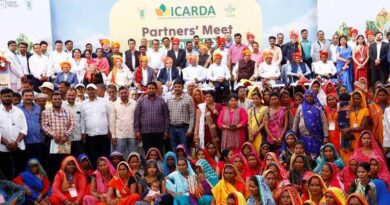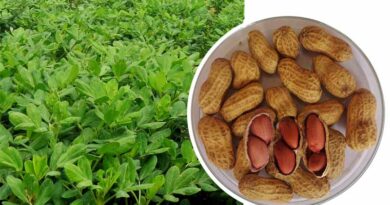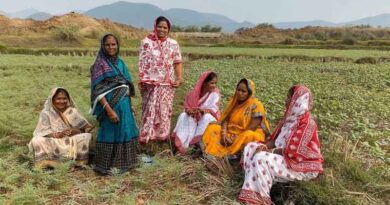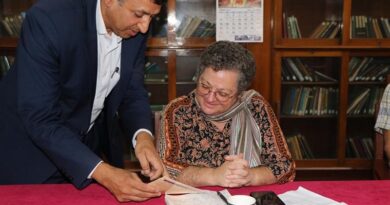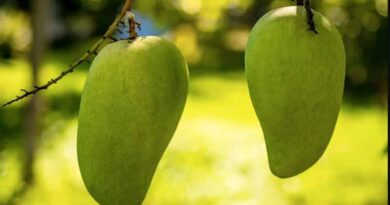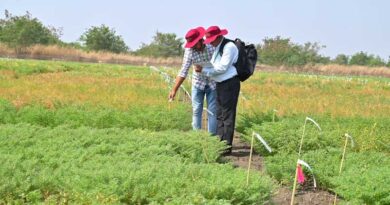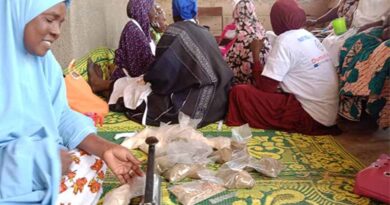Breaking the Stigma of Grasspea in South Asia
29 June 2024, Bangladesh: I jumped off the horse cart and landed on the sandy beach of Char Bongram, an island in the Brahmaputra River in Bangladesh, dotted with tough-looking, nondescript plants somehow surviving where no others could.
“You’re standing on grasspea,” said Shiv Agrawal, a pulses breeder with the International Center for Agricultural Research in the Dry Areas (ICARDA), as his eyes scanned the landscape. “The farmers here just sow the seed and come back a hundred days later and harvest the pods, which are full of protein-rich grains.”
Grasspea is like a superhero whose powers are overlooked. It can grow in some of the world’s most inhospitable places, improves degraded soil through nitrogen fixation and is rich in protein. It survives when and where other crops fail, thus gaining a reputation as an “opportunity crop”.
But despite these superpowers, grasspea is shunned in many places.
“It’s the stigma,” Shiv said. “There’s an age-old fear that eating grasspea will cause paralysis and permanent disabilities.”
Shiv (he’s the one wearing the black shirt standing at the right in the image below) leads the grasspea pre-breeding activity of the Biodiversity for Opportunities, Livelihood and Development (BOLD) Project, which uses the crop’s wild relatives to create a less toxic variety that yields more, in the hope of putting grasspea back on the menu.
Shiv grew up in the northern Indian region of Bundelkhand. “My mother would add grasspea to our chickpea or pigeonpea dal to give it more flavor,” Shiv said. “My grandfather ate a lot more of it than we did and lived to be 105. I only found out about the paralysis issue later in life when I read about ODAP in research journals.”
There is a basis to those fears.
The effects of eating too much grasspea have been known since ancient times.
Ancient Indian writers as well as Hippocrates wrote of a neurological disorder, which later became known as lathyrism, caused by eating grasspea grains.
Grasspea’s bad rap lives on through Francisco de Goya’s print Gracias á la Almorta (Thanks to the Grasspea), which depicts people crippled by excessive consumption of the grasspea porridge, a common famine food during the Spanish War of Independence against Napoleon.
Ethiopia has endured several lathyrism epidemics in the past 50 years. The most recent occurred in northeastern Ethiopia following the drought of 1995-96 and the subsequent widespread failure of mainstay crops.
“Whereas lathyrism is still a concern, we haven’t seen serious cases of it in South Asia, a major grasspea producing region, in the last 50 years. When it is eaten as part of a balanced diet, it’s perfectly safe,” said Shiv. “But the stigma remains, and people in some countries are still wary of eating it.”
Lathyrism is caused by a neurotoxic compound in the plant known as ODAP. If researchers like Shiv can lower ODAP in grasspea, they can maybe break the stigma.
Making Grasspea Safe
At ICARDA’s research station in Amlaha just outside of Bhopal, Shiv and his team are conducting experiments that could ultimately do just that.
Shiv pointed to a scraggly plant with pretty bright red flowers. “This is a wild relative of the grasspea,” he said. “It’s Lathyrus cicera and it has four to five times less ODAP than the grasspea we eat.”
I observe as a field technician removes the anthers from a grasspea flower to prepare it for pollination from another plant. “We crossed Lathyrus cicera, which is low in ODAP, with a cultivated grasspea variety with high yield and disease resistance,” said Shiv. “Some progeny will hopefully have the best of both plants.”
At the Phanda regional station of the Indian Institute of Pulses Research (IIPR) of the Indian Council of Agricultural Research, we see several hundred little plots of grasspea growing nicely. Each one is a bit different and each one is being carefully characterized. Among the plots were 21 lines of grasspea which were derived from crosses with wild relatives, including L. cicera.
“We are evaluating these promising lines not only for ODAP levels but also for yield and time to maturity and ultimately to determine which are most resilient to changes in the climate,” said Gitanjali Sahay, a grasspea breeder at IIPR. “One line of the 21 has already been selected as a candidate for the All India Coordinated Research Projects trials.”
It was encouraging to see the promise of grasspea trials at the research stations, but I wondered what the farmers thought of it all.
Taking Grasspea to Farmers’ Fields
We visited the farm of Shushila Parmar at Bamuliya, a village near Bhopal, where the BOLD Project is promoting grasspea through demonstration plots in farmers’ fields. Shushila planted a low-ODAP, improved grasspea variety called “Prateek”, allowing her family and neighboring farmers to see if they liked the look of it.
Having grasspea in their fields brought back some vivid childhood memories for Sushila and her husband, Amar. Across India, the area under grasspea cultivation has reduced tremendously over the years. If Prateek grows well, they are considering re-introducing it to their farm.
The Gracious Gift
After a week of seeing grasspea in the field, and learning of its nutritional benefits, I still hadn’t tasted it.
That changed in West Bengal.
At the guesthouse of the agricultural university – Bidhan Chandra Krishi Viswavidyalaya (BCKV) – I sat at a dining table as a growing number of little dishes of food were laid out in front of me in the “thali” tradition of food serving. I examined some dark greens with my fork, not having any idea what they were.
“You’re eating ‘saag’. It’s the tender shoots of grasspea,” said Arpita Das, a pulse breeder at BCKV. “We cut off just the tips and gently cook them with mustard oil and garlic.” I tried some and immediately forgot about any stigmas. I held out my dish for more.
Arpita brought us to Maheswarpur, a village in the Nadia district of West Bengal where grasspea is the predominant crop for human food, as tender tips and seeds for dal, as well as forage for livestock. The local community had planted 11 hectares of land to Ratan, Prateek and Bidhan Khesari-1, all low-ODAP varieties.
As I stood in the middle of the community-managed grasspea field, I asked how the villagers divided the farming tasks. The farmers had puzzled looks on their faces. “There is no labor with grasspea. Only sowing,” Manowar Hussain Mandal told me. “Nature does the rest.”
Later, in Bangladesh, former ICARDA pulse breeder Ashuthosh Sarker, who is one of the most outspoken proponents for grasspea, told me that the duly earned moniker for the hardy crop is “Grasspea is a Gracious Gift from God Globally.”
“It’s not a terribly demanding crop,” Ashutosh added. “It’s hardy enough to withstand pretty much anything Mother Nature will throw at it.”
(For Latest Agriculture News & Updates, follow Krishak Jagat on Google News)
(+80 Million Farming Audience Visits Krishak Jagat’s Hindi Website – Click Here for Website)


